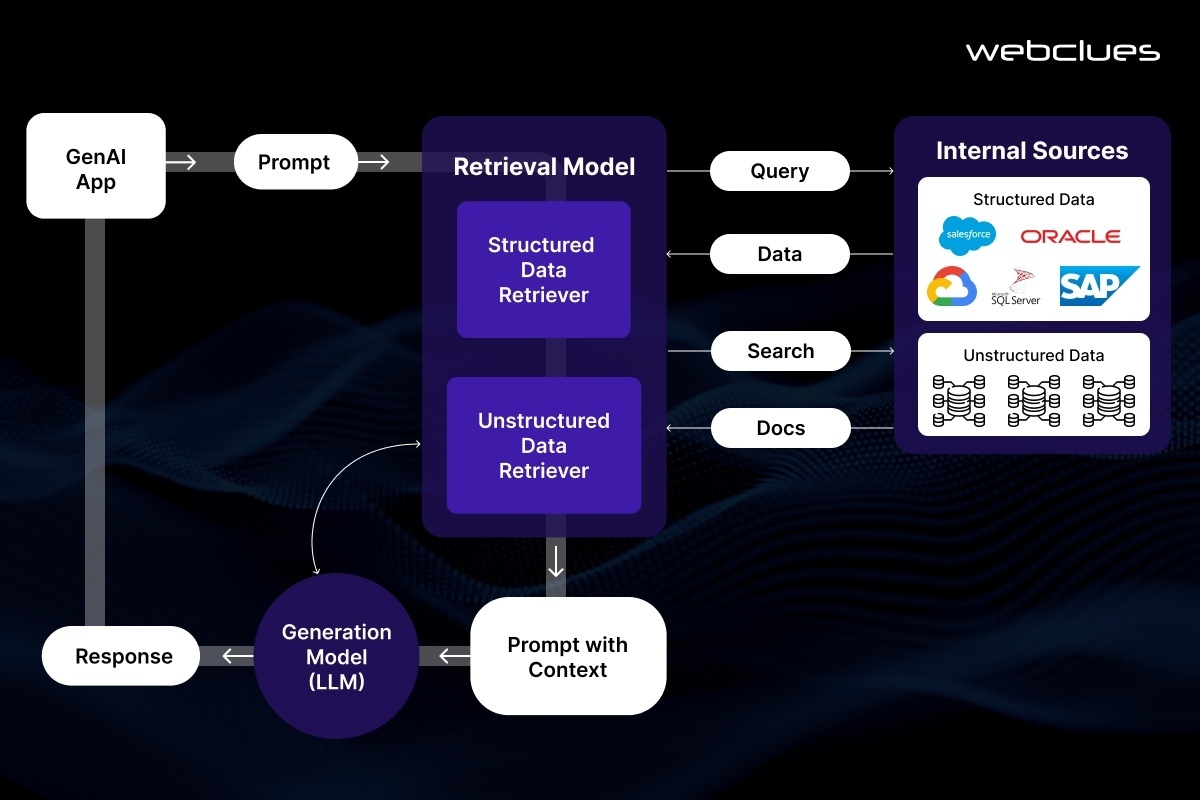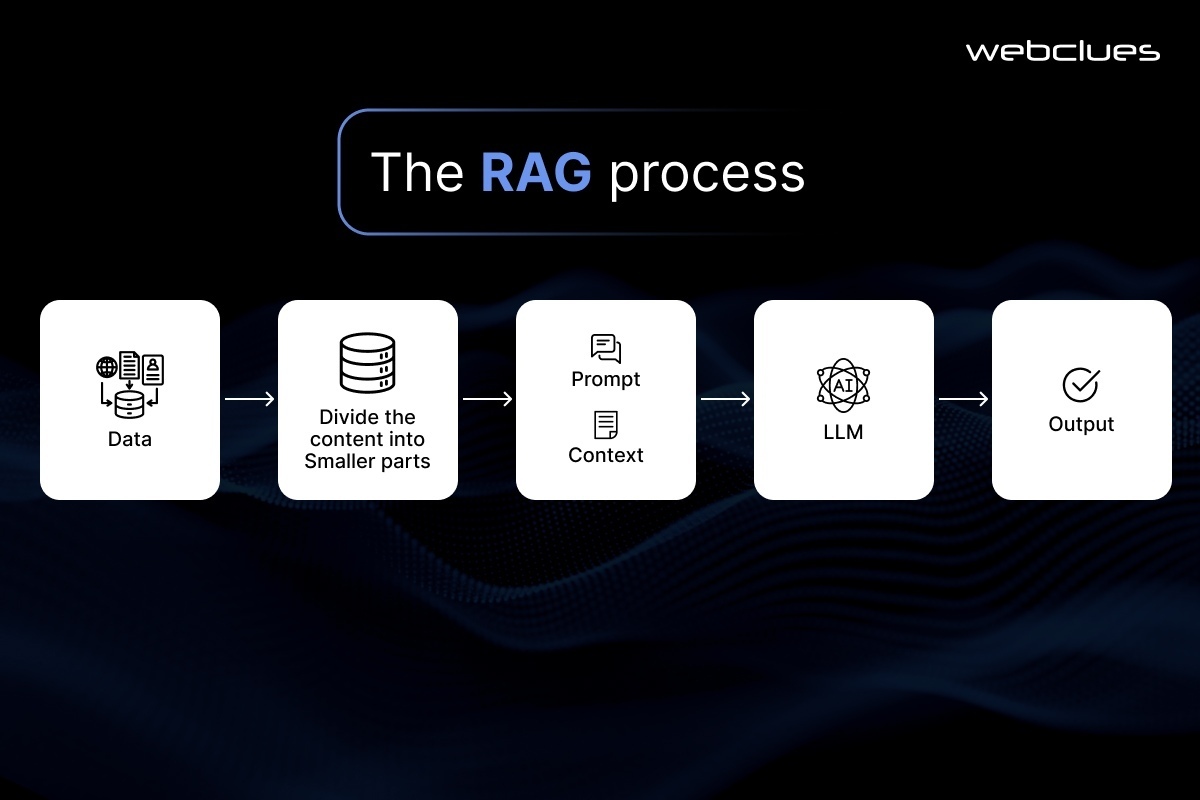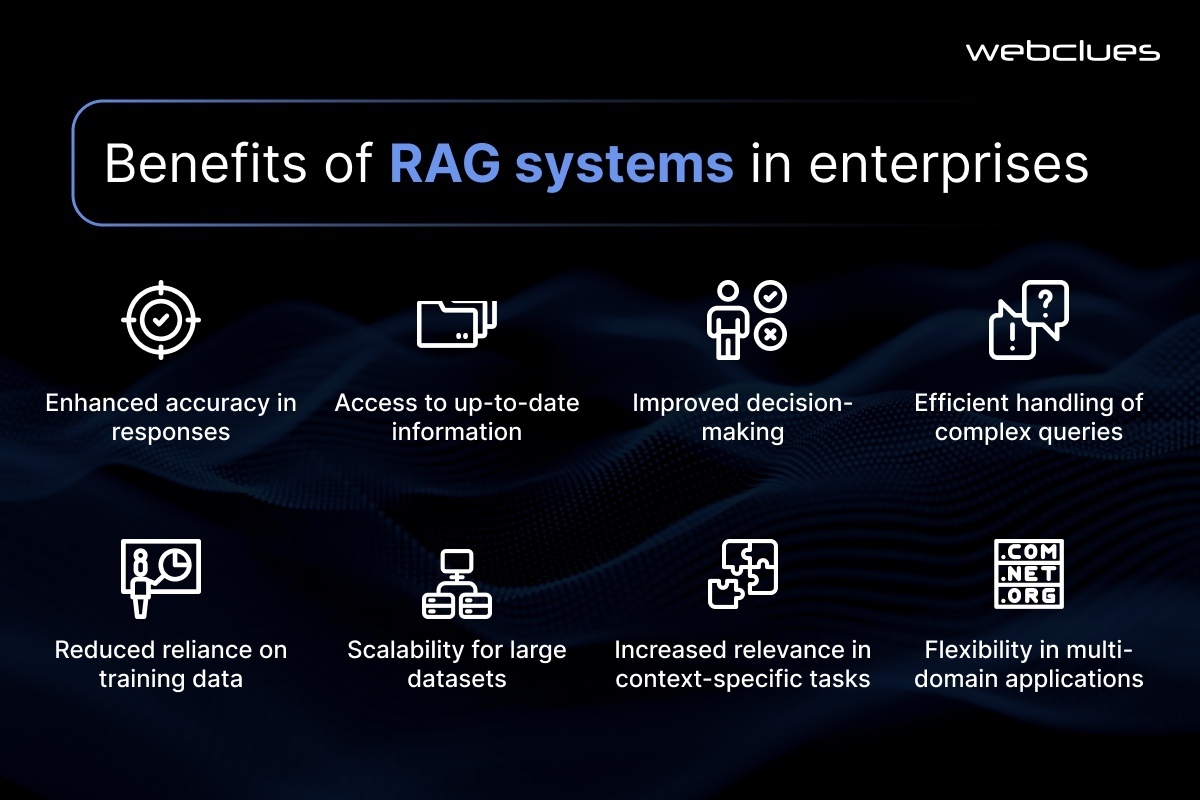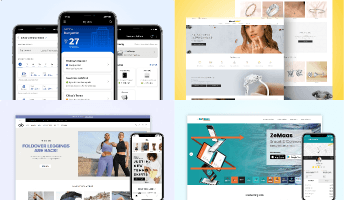What Is Retrieval-Augmented Generation (RAG) and How It Improves Enterprise Chatbots

Chatbots used to be simple. You’d type something in, and they’d match it to a rule or keyword and reply with a canned response. It worked—kind of—but only if you asked the exact thing they were programmed to understand.
Now things are different. With AI coming into the picture, chatbots have started doing a lot more. They can actually understand what you’re asking, look for the right information, and respond like they know what they’re talking about.
One of the key reasons this leap has been possible is something called Retrieval-Augmented Generation, or RAG. It’s a method that helps chatbots pull real, relevant information from a source before replying. That makes a big difference, especially for businesses that want their chatbots to be more than just digital receptionists.
For companies exploring AI development services or looking to build better enterprise chatbots, this is worth paying attention to. And if you're on the hunt for solid chatbot development services, RAG is a term you’ll likely come across more often.
What Is Retrieval-Augmented Generation (RAG)?
Let’s break it down.
Retrieval-Augmented Generation, or RAG, is a method used in AI that helps chatbots give better answers. Instead of guessing or relying only on what the AI model was trained on, RAG lets the chatbot look stuff up before replying. Think of it like this:
The old way: A chatbot is like a student who studied hard last year but hasn’t read anything new since.
With RAG: That same student now checks the latest articles, notes, or documents before answering your question.
RAG combines two things:
- Retrieval-based models – These fetch relevant info from a knowledge base (like company docs or support articles).
- Generative models – These take that info and turn it into a natural, conversational response.
Together, they give you the best of both worlds: answers that are accurate and easy to understand. That’s a big deal when building natural language processing chatbots that need to deal with real customer queries or internal team questions.
So when people talk about RAG in AI, they’re referring to this smart combo of “fetch first, reply later.”

How Does RAG Work in the Context of Enterprise Chatbots?
At a glance, RAG sounds smart — but what does it actually do inside an enterprise chatbot?
Here’s how it works, step by step:
- Someone asks the chatbot a question.
Let’s say a customer types, “How do I reset my account password?” - The chatbot doesn’t just guess an answer.
Instead, it searches internal documents — like help center articles, onboarding manuals, or support tickets. This is the “retrieval” part. - It grabs the most relevant pieces of content.
Maybe it finds a step-by-step guide from your company’s support docs. - Then, it uses an AI language model (like GPT) to build a reply.
This model reads the retrieved content and turns it into a clean, human-like answer that fits the question.

So instead of giving a vague or canned response, the bot says something like:
“To reset your password, click ‘Forgot Password’ on the login screen, then check your email for a reset link. If you don’t see the email, check your spam folder.”
And it doesn’t stop there. RAG can adapt the answer based on how the question was asked — which is why it’s a solid choice for AI-powered chatbots in customer service, HR, finance, or IT.
For companies investing in enterprise chatbot development, this approach makes a chatbot far more useful. It pulls real answers from actual business data and responds like someone who knows the system inside out.
That’s the real value of using RAG in enterprise AI — it adds context, accuracy, and trust to every reply.
Traditional Chatbots vs RAG-Based Chatbots
Not all chatbots work the same way. Here’s how the older models stack up against the newer RAG-based bots — and why many businesses are rethinking what kind of bot they need.
1. Rule-Based Chatbots
These are the old-school bots. They follow fixed rules and flowcharts. If someone says “Hi,” they reply “Hello!” If someone types anything unexpected, they get stuck or go in circles.
2. Generative Chatbots (LLM-Only)
These bots use large language models like GPT. They’re great at holding conversations and sounding human. But there’s a catch — they can “hallucinate,” which means they sometimes make things up because they don’t have access to live data.
3. RAG-Based Chatbots
This is where things get smarter. RAG bots still use a language model, but only after pulling real, relevant info from a trusted source. So instead of making up answers, they look things up — like a smart assistant that checks the facts before replying.
If you’re a business working with a chatbot development company, or thinking about AI chatbot solutions for your team or customers, this is the kind of comparison that really matters.
| Feature | Rule-Based Bots | LLM-Only Bots | RAG-Based Bots |
| Conversation Quality | Basic | Natural | Natural + Factual |
| Handles Unseen Questions | No | Yes | Yes |
| Data Source | Hardcoded | Model training data | Live/internal documents |
| Risk of Hallucinations | None | Medium | Very Low |
| Useful for Enterprises | Limited | Risky for support | Strong fit |
In most cases, RAG-based bots hit the sweet spot — smarter than rules-based bots, and more reliable than generative-only ones. They’re also a growing part of modern conversational AI development.
Benefits of RAG for Enterprise Chatbots
RAG isn’t just a technical upgrade — it actually solves real problems that businesses face with traditional chatbots. Here’s what makes it worth considering, especially if you’re looking into serious enterprise chatbot development services.

Access to Dynamic, Updated Knowledge
Most chatbots are stuck with whatever knowledge they were trained on. If your company updates its policies or adds a new product, the bot doesn’t know — unless someone manually updates it.
With RAG, chatbots can pull from live internal data (FAQs, docs, databases) every time they respond. So your chatbot is always in sync with your latest content.
Context-Aware, Accurate Answers
One of the big benefits of Retrieval-Augmented Generation is that it helps reduce “hallucinations” — those times when AI makes things up.
Since RAG bots base their responses on real data, the chances of wrong answers go down. That’s huge for enterprise use, where accuracy actually matters.
Better Compliance and Fact-Checking
When you’re dealing with sensitive info — finance, healthcare, HR — you can’t afford chatbot mistakes.
RAG lets you control what your bot pulls from. That means tighter fact-checking, stronger compliance, and more trust in what the bot says.
Natural Conversations Without the Fluff
Because RAG still uses a language model to craft responses, the chatbot doesn’t sound robotic. You get accurate answers, but they’re still phrased in a way that feels human and clear — not like they were copied from a help center article.
Scales Easily Across Teams and Departments
Whether it’s helping new employees onboard, answering IT support tickets, or guiding customers through a process — RAG-based bots can handle a wide range of tasks.
And since they pull from different sources, it’s easy to scale them across departments without starting from scratch each time.
Use Cases of RAG-Powered Chatbots in Enterprises
The real strength of RAG-based chatbots shows up in how they’re used across different teams. Because they can pull real-time, reliable info, they’re not tied to just one role — they fit wherever there's a need for quick, accurate answers.
Here are a few solid use cases:
Internal Knowledge Assistants
Instead of digging through shared drives, PDFs, or Slack threads, employees can just ask a bot. RAG-powered assistants fetch answers from internal documents, onboarding guides, or product manuals — and explain it in a way that actually makes sense. This makes them perfect for teams that need fast access to company knowledge without wasting time.
Customer Service Agents
For support teams, accuracy and speed are everything. A RAG chatbot can look through help docs, past support tickets, or policy sheets before replying to a customer — so it doesn’t just sound confident, it is confident.
This kind of bot becomes a frontline support agent that’s reliable and available 24/7.
Sales Enablement Tools
Sales teams often need quick answers about products, pricing, or competitor comparisons — especially during calls or demos.
With the right AI chatbot integration, a RAG-based assistant can pull that info instantly from sales decks, product sheets, or CRM data. No more flipping between tabs while the lead waits.
HR Virtual Assistants
“Where do I find the leave policy?”
“Can I switch insurance plans this month?”
Instead of sending these to your HR team again and again, a chatbot can step in. RAG models make sure it’s giving up-to-date info directly from HR documents, without missing anything important.
IT Helpdesk Automation
Password resets, VPN errors, software install guides — most IT support queries are repetitive.
A RAG-powered chatbot can pull from internal IT wikis or setup documents to walk users through fixes. That saves your tech team hours every week and keeps things moving for the rest of the company.
If you're exploring custom chatbot development or thinking about how to bring AI chatbot integration into your workflows, these are the kinds of tasks where RAG really earns its spot.
RAG Implementation Challenges and Considerations
While RAG-powered chatbots are a big step forward, setting them up isn’t just plug-and-play. Like any serious tech, there are a few things to think through before jumping in — especially if you’re exploring AI development services or planning broader enterprise AI adoption.
Data Source Accuracy and Reliability
RAG bots are only as good as the data they pull from. If your internal docs are outdated, scattered, or poorly written, the answers won’t be helpful — or worse, they’ll be wrong. So before building anything, it’s worth spending time cleaning up and organizing your knowledge base.
Retrieval Latency
Since RAG bots need to search, find, and then generate a response, there’s a bit more going on under the hood compared to a simple chatbot. That can mean slower response times if the system isn’t optimized. This is true especially with large or complex data sources. Good architecture helps, but it’s something to plan for.
Fine-Tuning for Specific Domains
Generic answers don’t always cut it, especially in industries like healthcare, legal, or finance. To make the chatbot truly useful, it often needs to be fine-tuned on company-specific terminology and context. That takes some extra effort, but it's worth it if accuracy matters.
Cost of Infrastructure
RAG setups typically involve multiple components: a large language model, a retrieval engine, and sometimes a vector database. Hosting all that, especially with high uptime and performance, can add up. It’s important to weigh the benefits against the budget and look for setups that scale gradually.
How to Build a RAG-Enhanced Enterprise Chatbot
If you’re thinking about building a chatbot that actually gets things right and stays useful over time, RAG is a good route. It’s not overly complex once you break it down. Here’s how the process usually looks.
Define the Use Case
Start with the “why.” Is it for customer support? Internal IT? HR queries? Sales? A clear use case helps you decide what kind of information the chatbot needs access to, and how it should respond.
Choose a Base Language Model
This is the generative part — the engine that actually writes the responses. Popular choices include models like GPT or other open-source options, depending on your budget and data sensitivity.
Set Up a Retrieval System
Here’s where the “retrieval” in RAG comes into play. You’ll need a system that can pull relevant documents, files, or structured data when a question is asked.
This usually involves setting up:
- A vector database (like Pinecone or Weaviate)
- Embedding tools to turn your documents into searchable chunks
- A logic layer that connects all of this to your chatbot
Fine-Tune for Your Domain
Out of the box, language models are general-purpose. To make the chatbot sound like it knows your business, you’ll want to fine-tune it with company-specific phrases, industry terms, and tone. This can be done gradually, starting with FAQs and internal documents.
Test and Deploy
Before you go live, test the chatbot with real questions from actual users. See how well it handles unknown queries, checks for edge cases, and pulls the right info. Once you’re confident, deploy it — and keep an eye on performance to improve it over time.
If you're looking for a chatbot development company that understands both the technical stack and the real-world use case, WebClues Infotech has you covered. From setup to deployment, we help businesses with enterprise chatbot development that fits their goals, backed by years of experience in AI development.
Talk to our team to get started on your RAG-powered chatbot project.
Why Partner with a Chatbot Development Company Like WebClues Infotech
Building a smart chatbot takes more than just plugging in an AI model. It takes real planning, a solid understanding of your business, and the right team behind it.
That’s where WebClues Infotech comes in.
We’ve worked with businesses across industries to deliver practical, scalable AI development services that actually get used. Whether you need a bot to handle internal support, customer conversations, or something more niche, we can help.
Here’s what we bring to the table:
- Experience with enterprise AI solutions — not just building bots, but making sure they work in real-world business environments.
- Custom chatbot development — designed around your workflows, not someone else’s template.
- Smooth integration across platforms — Slack, Teams, CRM tools, internal portals — we make it work where your users already are.
Talk to our experts today to build a RAG-powered chatbot that’s accurate, fast, and helpful from day one. We’ll help you map out the plan, set it up, and get it running the right way.
Conclusion
Retrieval-Augmented Generation is a smarter way to build bots that work. For businesses exploring enterprise chatbot options, RAG bridges the gap between helpful and truly intelligent.
Instead of guessing or relying on outdated data, an AI-powered chatbot built on RAG can look up the right info and reply with real context. It’s reliable, scalable, and built for how teams actually work.
Whether you’re just exploring the idea or already planning a rollout, WebClues can help you get started.
Reach out to us here to talk about your chatbot project.
Build Your Agile Team
Hire Skilled Developer From Us
Build smarter enterprise chatbots with Retrieval-Augmented Generation.
From knowledge assistants to sales tools, our team maps use cases and delivers robust, AI-powered chatbot solutions. Let’s talk about how we can bring Retrieval-Augmented Generation into your workflows.
Get a Quote!Our Recent Blogs
Sharing knowledge helps us grow, stay motivated and stay on-track with frontier technological and design concepts. Developers and business innovators, customers and employees - our events are all about you.
Contact Information
Let’s Transform Your Idea into Reality - Get in Touch
India
Ahmedabad
1007-1010, Signature-1,
S.G.Highway, Makarba,
Ahmedabad, Gujarat - 380051
Rajkot
1308 - The Spire, 150 Feet Ring Rd,
Manharpura 1, Madhapar, Rajkot, Gujarat - 360007
UAE
Dubai
Dubai Silicon Oasis, DDP,
Building A1, Dubai, UAE
USA
Delaware
8 The Green, Dover DE, 19901, USA
New Jersey
513 Baldwin Ave, Jersey City,
NJ 07306, USA
California
4701 Patrick Henry Dr. Building
26 Santa Clara, California 95054
Australia
Queensland
120 Highgate Street, Coopers Plains, Brisbane, Queensland 4108
UK
London
85 Great Portland Street, First
Floor, London, W1W 7LT
Canada
Burlington
5096 South Service Rd,
ON Burlington, L7l 4X4





